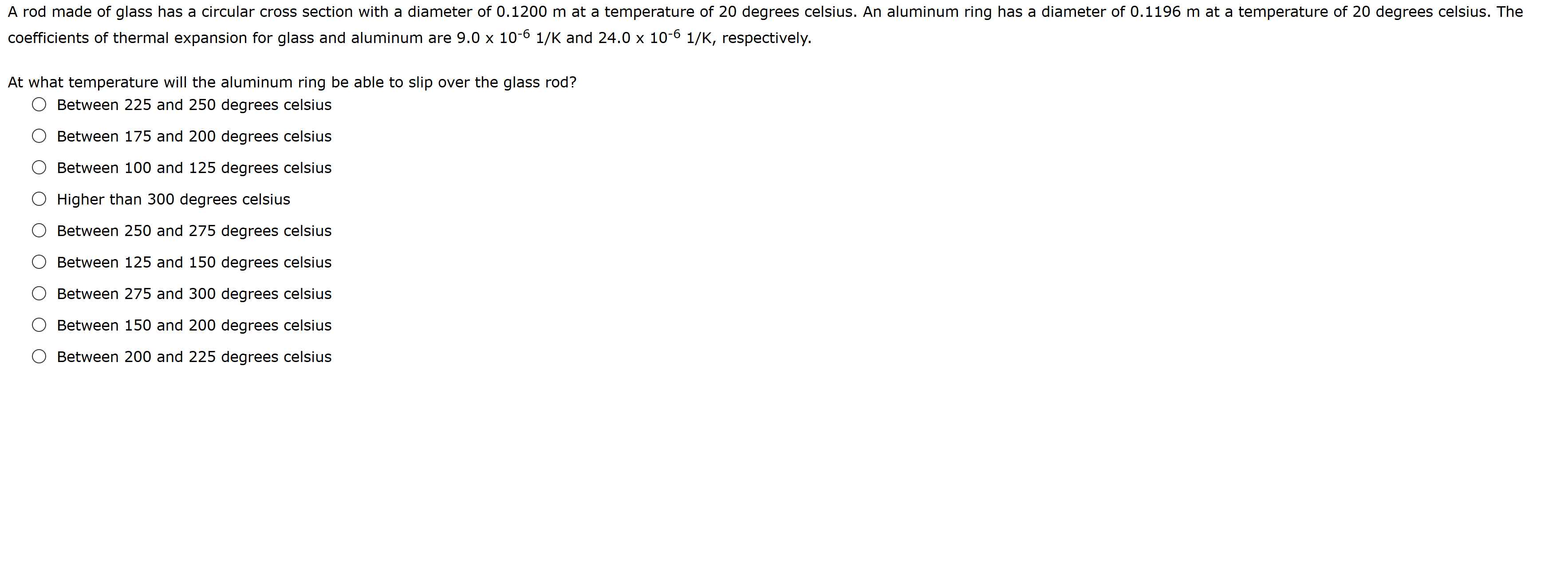A rod made of glass has a circular cross section with a diameter of 0.1200 m at a temperature of 20 degrees celsius. An aluminum ring has a diameter of 0.1196 m at a temperature of 20 degrees celsius. The coefficients of thermal expansion for glass and aluminum are 9.0 x 10-6 1/K and 24.0 x 10-6 1/K, respectively. At what temperature will the aluminum ring be able to slip over the glass rod? Between 225 and 250 degrees celsius Between 175 and 200 degrees celsius Between 100 and 125 degrees celsius Higher than 300 degrees celsius Between 250 and 275 degrees celsius Between 125 and 150 degrees celsius Between 275 and 300 degrees celsius Between 150 and 200 degrees celsius O Between 200 and 225 degrees celsius
Energy transfer
The flow of energy from one region to another region is referred to as energy transfer. Since energy is quantitative; it must be transferred to a body or a material to work or to heat the system.
Molar Specific Heat
Heat capacity is the amount of heat energy absorbed or released by a chemical substance per the change in temperature of that substance. The change in heat is also called enthalpy. The SI unit of heat capacity is Joules per Kelvin, which is (J K-1)
Thermal Properties of Matter
Thermal energy is described as one of the form of heat energy which flows from one body of higher temperature to the other with the lower temperature when these two bodies are placed in contact to each other. Heat is described as the form of energy which is transferred between the two systems or in between the systems and their surrounding by the virtue of difference in temperature. Calorimetry is that branch of science which helps in measuring the changes which are taking place in the heat energy of a given body.

Step by step
Solved in 3 steps with 3 images








